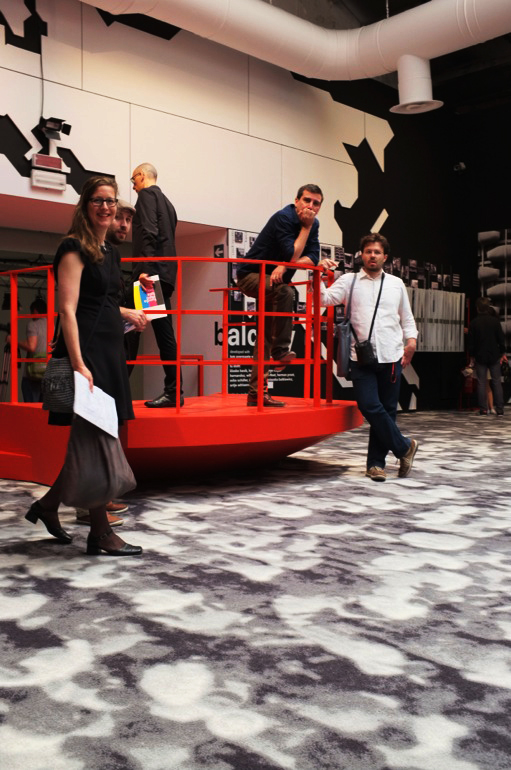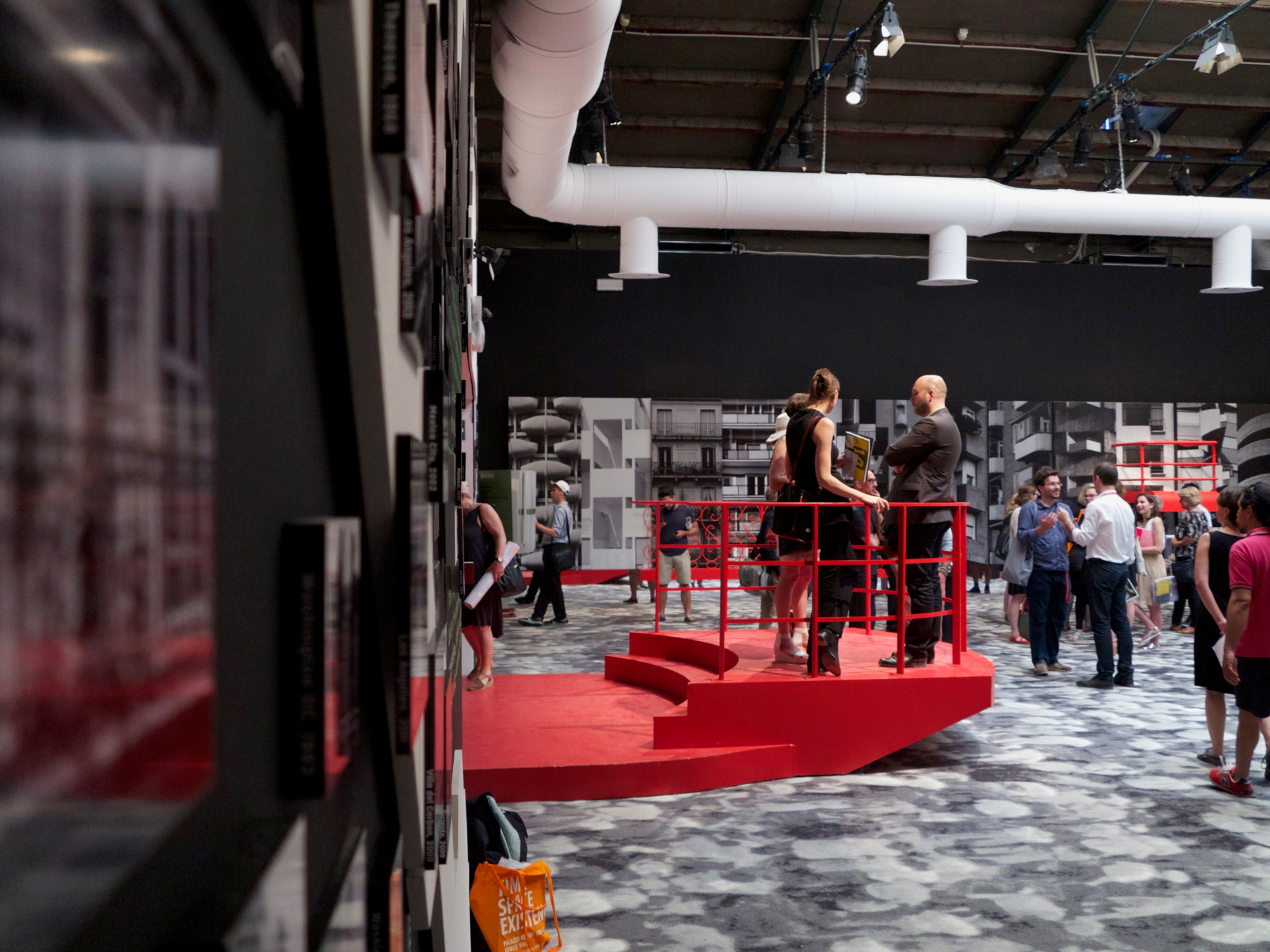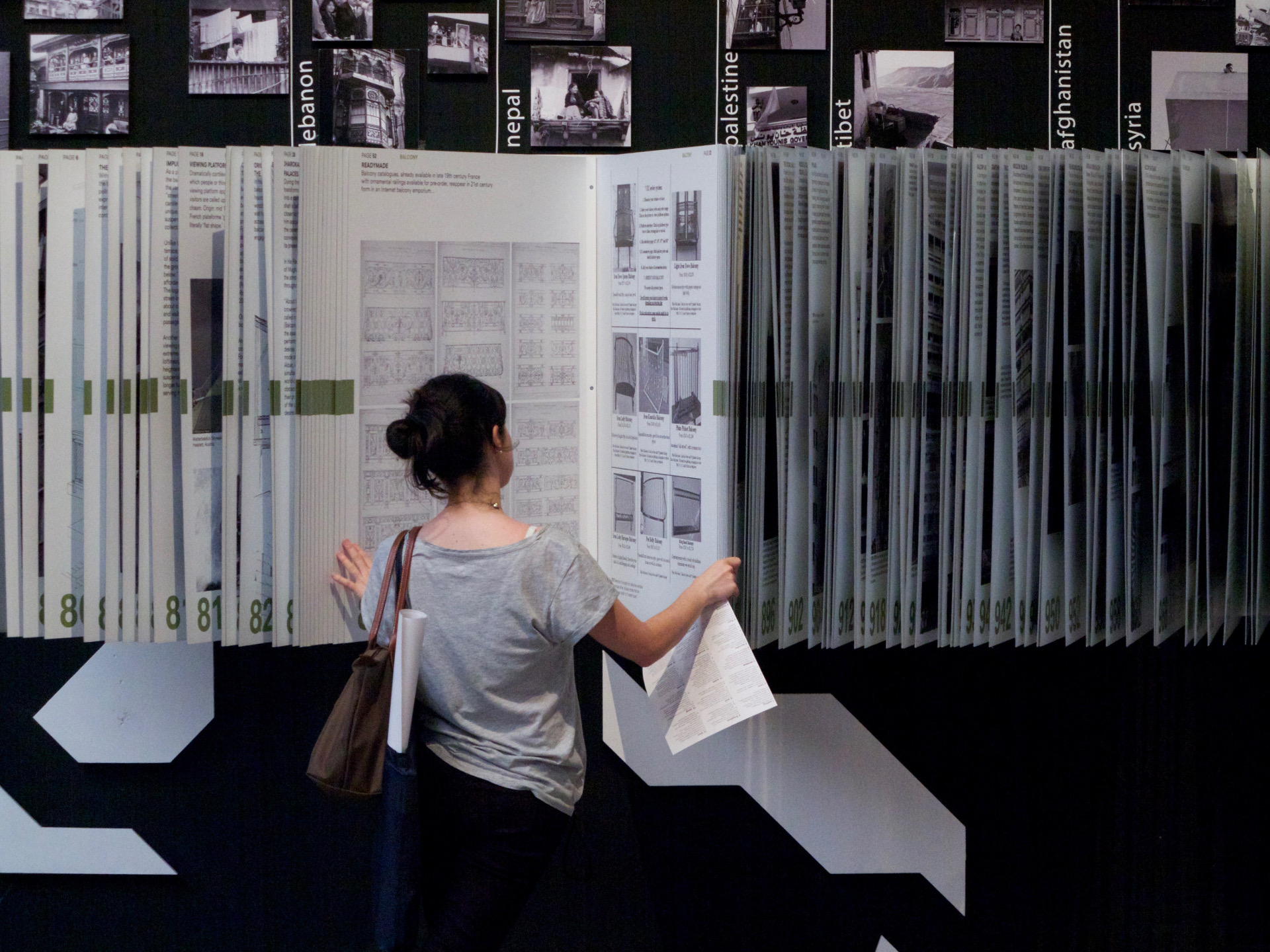Balcony Exhibition
The Balcony at the Venice Biennale Architettura 2014
“Intruder”, “polluter”, “disturbance”; but also a “modern architectural element par-excellence”: so, the balcony has been qualified. Holding a special position within architectural discourse and practice, it has been both a prime site of aesthetic and technical experimentation, and a heavily charged articulator of the dependencies that exist between the public and private realms.
The Chair of Architecture/Methods and Analysis of the Faculty of Architecture and the Built Environment of the Delft University of Technology, has contributed to the main exhibition ‘Elements of Architecture’ of the Venice ‘Biennale Architettura 2014’ that is curated by Rem Koolhaas. The contribution investigates the element of the balcony, which, according to the curator prof. Tom Avermaete is a remarkable architectural element in-between the private and the public sphere, an element that simultaneously connects and withdraws, separates and unites individuals and the collective.
Visitors to the gallery, designed and constructed by the chair, are confronted with the transparency of modernist and the screened character of vernacular balconies. In addition, three narrative lines are presented:
1.
A first line focuses on the political role of the balcony. A worldwide geography illuminates how balconies are carriers of both pivotal political speeches and actions (macro-political) and accommodators of everyday resistances of their inhabitants (micro-political). Climactic balcony scenes such as the “renunciation” speech by Eva Perón in Buenos Aires; or the first address of the liberated Mandela at the Cape Town City Hall in 1990, are combined with more everyday, but not less political actions in the same cities.
2.
A second narrative concentrates on balconies that have acted as focal points in architectural culture. A full-size model of a Haussmann balcony, able to articulate the bourgeois public sphere in 19th century Paris, is confronted with the modernist transparency of the Bauhaus at Dessau and an Algerian balcony by Fernand Pouillon in which vernacular and modern definitions of the public sphere coincide.
3.
A third storyline focuses on the liminal role of the balcony. Images from collective housing projects illustrate how the balcony is one of these places where “the world reverses itself”, by regulating the in-formality between interior and exterior, individual and collective domains and between the private and public realms, among many other tensions. Converging on these three main narratives, this gallery invites contemporary architects to rethink the balcony as a key liminal architectural element, feeding from the power of its spatial depth, its intense cultural charge and its obvious experiential complexity.
Curatorial team: Tom Avermaete with Chair of Methods and Analysis, Faculty of Architecture and the Built Environment (A+BE), TU Delft/ Delft University of Technology: Klaske Havik, Hans Teerds, Jorge Mejía Hernández, Willemijn Willems-Floet, Herman Prast, Mike Schäfer, Ivan Thung, Agniezska Batkiewicz, Antje Adriaens
Special thanks to: Luisa Calabresa, Leonardo Zuccaro, Anna Topolnicka, Charlotte Churchill, Mania Bien, Piotr Ruszkiewicz, Sanne Dijkstra, Simone Costa, Tadeas Riha, Xander van Dijk





